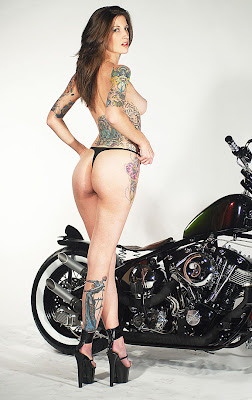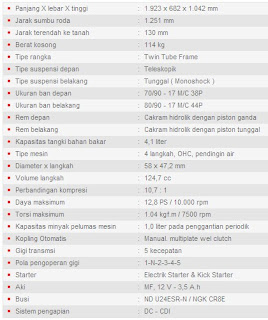We finally slap our test gear onto the potent Challenger SRT8 to see if it’s actually up to the challenge.
With so much presale buildup, we’ve told you bit by bit pretty much everything about Dodge’s old-meets-new Challenger SRT8. By now, the fundamentals should be familiar. The SRT8 is essentially a Charger SRT8 sedan with four inches cut from the middle and two fewer doors; it’s powered by the same 425-hp, 6.1-liter Hemi V-8 found in other SRT8 models in the Chrysler family; and it looks spectacular in orange. It also outguns the R/T and SE Challenger models that will be added for ’09.
What you might not know are some of the finer details. The 2008 SRT8 is the only Challenger to be designated as an ’08, and each of the 6400 U.S. cars—they are already sold out—gets a numbered plaque, orange seat stripes, and faux-carbon-fiber hood stripes. Also, the Challenger SRT8 debuts SRT’s brake “knock back” system that ensures the pads stay close to the discs during spirited driving as well as a “Performance Features” readout on the dashboard that displays acceleration, braking, and handling achievements for the driver’s amusement. The Challenger SRT8 starts at just over $40,000.
But until we shot up Angeles Crest Highway in the SRT8 at the press program in Pasadena, California, we hadn’t been able to log any significant drive time. Soon afterward, we got our paws on one at home in Ann Arbor and took it to the test track to get the numbers. Would the Challenger’s bad-ass attitude be backed up with genuine muscle-car street cred, or was Chrysler unable to mask the family sedan beneath the retrospective skin?

More Than Just Another Square-Jawed Muscle Car
The answer? Both. Thanks to that monster motor and a short first gear, the Challenger does earn a dollop of street cred, hitting 60 mph in 4.8 seconds, charging through the quarter-mile in 13.3 at 108 mph, and running to a drag-limited top speed of 168 mph.
But the Challenger SRT8 is more than just a drag-strip junkie. Its LX platform, for all its heft, does bring with it a sophisticated suspension that made easy work for Chrysler’s Street and Racing Technology team to engineer a combination of decent ride quality and tenacious grip, neither of which is a strong suit of muscle cars from bygone years (or, for that matter, of the current Ford Mustang). So, like any SRT8 product, it may be inescapably a family car in many ways, but it’s a fast and capable performance car, too.
Seriously Capable, but Where’s the Feel?
The multilink front and rear suspension is tuned for amazingly flat cornering, something vividly apparent on Angeles Crest Highway, where we flogged it left and right but watched the horizon that was the big, long hood stay level with the ground. Coupled with the sticky optional Goodyear F1 Supercar summer tires, the suspension imparted the Challenger with some pretty astonishing grip in corners. On the skidpad in Michigan, which admittedly was described as “really slippery” that day, the Challenger pulled a respectable 0.86 g with moderate understeer that can be corrected by the pedal on the right. But alas, with a curb weight of 4189 pounds, Chrysler was unable to mask the LX platform on which it’s based.
Missing from the equation was a great sense of steering feel that is somewhat slow to respond off-center despite its quick, constant-ratio rack and 2.75 turns lock-to-lock. Technical editor Mike Austin attributes the lack of steering feel, ironically, to the lack of body roll; when there’s no sense of heave-ho, set, and then bite, there is little impression of the car responding, even though it is, he explained. Then again, the lack of feel is strangely appropriate, if only for this car. “It’s an unintended throwback to the ’70s,” said Austin.

The same can be said for the brakes. Stopping a big, heavy coupe from 70 mph in an impressive 170 feet—the length of just four Greyhound buses—is no simple feat. Thank you, Brembo, for your help on each of the SRT8’s four corners. But as with the steering, feedback is another thing, and somewhat absent here, too. Our test car in L.A. had a good inch or so of pedal travel before anything at all happened, and our tester in Michigan was little better. We have to issue one caveat: These both were well-worn press cars, and not all cars at the California event suffered thusly. But here’s the obvious warning to future owners: These brakes can get worn out under constant abuse.
Unfortunately, this meant that we really couldn’t tell you whether or not Dodge’s new brake knock-back system is worth a darn. We appreciate the intuitiveness of the concept: When the g-sensor detects dynamic forces of more than 0.50 g, the brake pads are moved closer to the rotors to quicken brake actuation when ultimately called on. We’ll have to get a fresh car soon and lap a track with, say, a Dodge Charger SRT8 to see if there is a measurable difference.
Performance Features Display—Very Informative, Very Addictive
Another interesting—and seriously cool—new bit is the Performance Features display, which is part of the multi-information screen nestled into the gauge cluster. Several steps beyond the lateral-g meter available in the Chevy Corvette, Performance Features measures 0-to-60-mph, 1/8-mile, and 1/4-mile acceleration times, 60–0 braking distance, and g-forces in all four directions (either peak or real-time). At several points during our drive in California, we saw readings of 0.99 g left and right, but it’s worth noting that those were peak g-forces, not steady-state g as measured on a skidpad.
We did not have the opportunity to measure the Challenger’s readout against our test equipment for braking and acceleration, but we have verified the relative accuracy of such systems currently available in the aftermarket, so there’s no reason to believe that the Mopar system shouldn’t be accurate. A similar system is already in the Caliber SRT4, and we expect it to spread to other SRT products in the near future.
Also, expect your license to take a hit or two along what will certainly turn into a constant quest for a new personal performance best. Keep your eyes on the road. They hide in the bushes.

Oh, That Glorious Engine
Besides, they’ll hear you coming. Particularly under full tilt, the throaty, 6.1-liter engine is loud and furious. Wide-open throttle bathes all occupants in nearly 84 decibels of symphonic, mechanized glory characterized by crispness as well as volume. Around town, on the other hand, it is very calm and refined—rather quieter than we expected, especially at its 49-decibel idle.
It’s an engine that keeps on giving. Its 425 horsepower peaks at 6200 rpm, just 200 revs shy of its 6400-rpm redline. Torque is all over the place but peaks at a relatively lofty 4800 rpm. In other words, go ahead and hold that gear above where you’d normally shift in a Mustang, because there’s more power to come.
Too bad there aren’t more gears. The five-speed AutoStick automatic is a throwback to the DaimlerChrysler days, and with a shortened first gear for acceleration and a relatively tall fifth gear for fuel economy (its 168-mph top speed is achievable in fourth), the gears are simply too spread out. Indeed, on Angeles Crest and even on the track at Willow Springs, there were many moments when we wished third came a little closer to second, and fourth to third, if only so that we wouldn’t be dumped into a completely different part of the power band when shifting. At least the shifts themselves are very quick—thanks, SRT. Next year, a six-speed manual will be available in the SRT8 and R/T Challengers, and needless to say, we can’t wait.
Too Late for ’08
Speaking of next year, that’s the soonest you’ll be able to get one. Dodge is making just 6400 Challengers for 2008, all of which are SRT8s and all of which are sold. Dodge claims to have more than 10,000 orders for the SRT8, and certainly, many buyers will be willing to wait until the 2009 model year, which, incidentally is when the less powerful and less expensive Challenger R/T and SE models will join the party. Pricing is—or was—$40,158 to start, with fully loaded examples coming in around $42,000, including a sunroof, MyGIG entertainment with navigation, and the $50 summer-tire upgrade for those sexy 20-inch wheels.
We don’t expect pricing to change much for ’09, but the carbon-look hood stripes will become matte black, the orange seat stripes will become red, and the numbered plaque commemorating the first-year model will disappear.

2008 Dodge Challenger SRT8 Specs
VEHICLE TYPE: front-engine, rear-wheel-drive, 5-passenger, 2-door coupe
PRICE AS TESTED: $40,208 (base price: $40,158)
ENGINE TYPE: pushrod 16-valve V-8, iron block and aluminum heads, port fuel injection
Displacement: 370 cu in, 6059cc
Power (SAE net): 425 bhp @ 6200 rpm
Torque (SAE net): 420 lb-ft @ 4800 rpm
TRANSMISSION: 5-speed automatic with manumatic shifting
DIMENSIONS:
Wheelbase: 116.0 in Length: 197.8 in Width: 75.7 in Height: 57.0 in Curb weight: 4189 lb
C/D TEST RESULTS:
Zero to 60 mph: 4.8 sec
Zero to 100 mph: 11.4 sec
Zero to 150 mph: 30.8 sec
Street start, 5–60 mph: 5.1 sec
Standing ¼-mile: 13.3 sec @ 108 mph
Top speed (drag limited): 168 mph
Braking, 70–0 mph: 170 ft
Roadholding, 300-ft-dia skidpad: 0.86 g
 The four-stroke replacement for 250cc two-stroke racing will be unveiled at the Grand Prix de France this weekend. It's expected that the class will be replaced by 600cc four-stroke prototypes. The rules will be presented in proposal form, then considered by both the International Race Teams Association and Motorcycle Sport Manufacturers Association and should be finalized June 8 at the Catalunya GP. The new rules could be implemented as early as 2010.
The four-stroke replacement for 250cc two-stroke racing will be unveiled at the Grand Prix de France this weekend. It's expected that the class will be replaced by 600cc four-stroke prototypes. The rules will be presented in proposal form, then considered by both the International Race Teams Association and Motorcycle Sport Manufacturers Association and should be finalized June 8 at the Catalunya GP. The new rules could be implemented as early as 2010.



























































